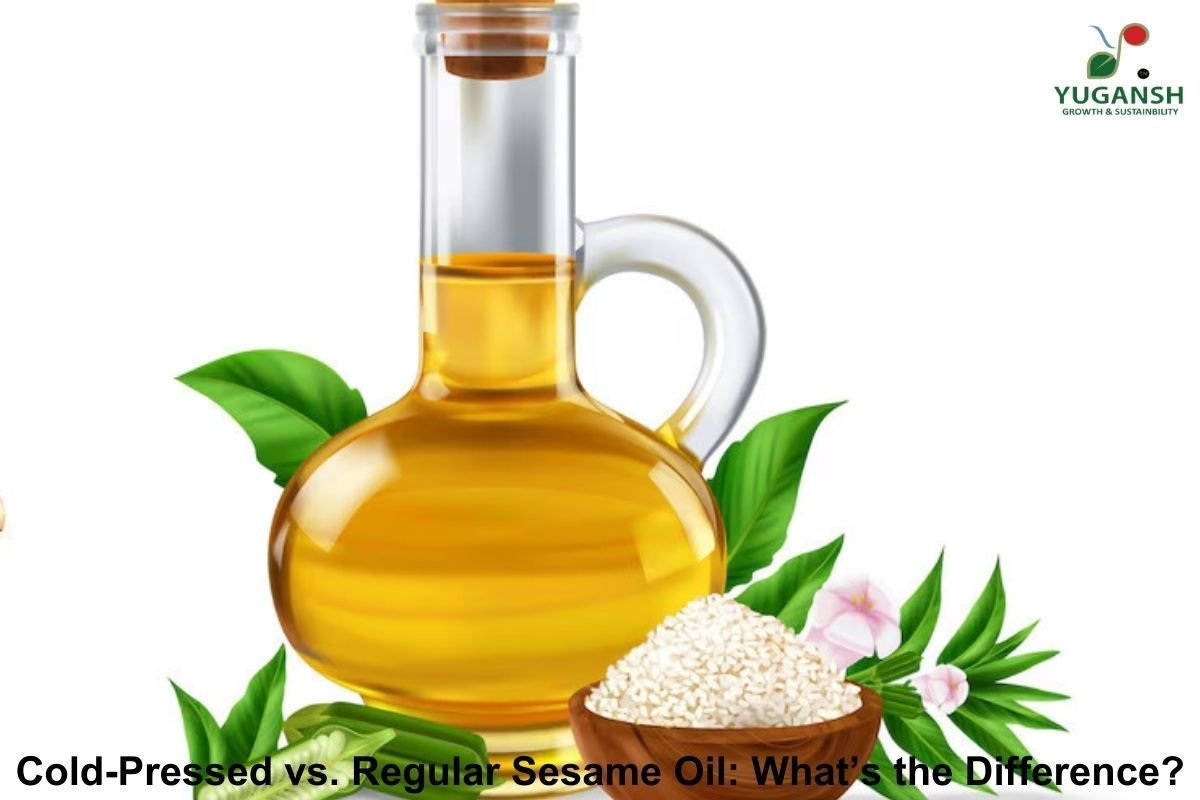Sesame oil is one of the most widely used cooking oils in the market, mainly for its nutty flavour. It has two major types: cold-pressed and regular sesame oil. Both are extracted differently, hence possessing distinct characteristics. Cold-pressed sesame oil is made without heat, thereby retaining its natural nutrients and flavour. Additionally, Regular sesame oil is prepared using heat, which makes it taste more robust and roasted. In this blog, we are going to explain the differences between these two oils, which will help you choose the best one for your cooking.
What is Cold-Pressed Sesame Oil?
Cold-pressing of sesame oil does not use any heat. The method for the extraction of this oil is very slow, but the careful crushing of sesame seeds will yield the oil, ensuring the nutrients, antioxidants, and flavours of the oil are well preserved. Cold pressed oil retains more of its original properties, making it healthier.
Making cold-pressed oil also preserves most of the vitamins and minerals in it. Therefore, it often has a higher concentration of Vitamin E, which benefits the skin and overall health. Cold-pressed sesame oil has a unique flavour profile with a nutty flavour. That is why this type of oil is so commonly used in making salad dressing, dips, or simply dressing up a dish.
What is Regular Sesame Oil?
Regular sesame oil is produced using heat or chemical methods to extract oil from sesame seeds. First, the seeds are roasted to bring out the flavour. Then, the oil is extracted by pressing or using chemicals. This method results in an oil with a more intense flavour but fewer nutrients than cold-pressed sesame oil.
Regular sesame oil is commonly known as wood-pressed oil in some areas. It is used as a cooking oil because it has a higher smoke point than cold-pressed oil. However, it lacks the nutritional benefits of cold-pressed oil. Regular sesame oil has a more neutral flavour, which works well in different cooking styles.
Key Differences Between Cold-Pressed and Regular Sesame Oil
Production Process: Cold-pressed sesame oil is produced without applying heat. It retains most of the nutrients and flavours. However, regular sesame oil is produced with heat and sometimes chemicals. Therefore, it tastes and contains more nutrients differently.
Flavour: Cold-pressed sesame oil has a fresh, nutty taste that adds flavour to dishes. It retains the natural sesame flavour due to its unheated extraction process. Sesame oil is stronger and has a roasted flavour, making it perfect for dishes requiring a stronger flavour.
Nutritional Value: Cold-pressed sesame oil is rich in antioxidants, vitamins, and healthy fats. It is very high in Vitamin E, which enhances skin health and strengthens immunity. Regular sesame oil, on the other hand, loses a bit of its nutritional value through the heating process. Hence, it contains fewer antioxidants and vitamins.
Smoke Point: One of the major differences between the two oils is the smoke point. Cold-pressed sesame oil has a lower smoke point. Therefore, it is more suitable for dressings and low-heat cooking. Regular sesame oil, on the other hand, with a higher smoke point, is more suitable for frying or high-heat cooking.
Health Benefits: Cold-pressing gives more health advantages due to its nutrient richness profile. It is so good for heart health, skin health, and healthy digestion. Furthermore, some health benefits are offered with regular sesame oil, yet it still lacks the huge amounts of antioxidants that appear in the cold-pressing procedure. Thus, cold-pressing sesame oil is far more health-oriented.
Which One Should You Choose?
The choice between cold-pressed and regular sesame oil is based on your needs. If you want a flavorful oil, which is rich in nutrients, then cold-pressing sesame oil would serve you well. Cold-pressed sesame oil is best used in recipes that do not require high heat – like salads or dips.
However, if you’re looking for an oil to fry with or cook at a very high temperature, then regular sesame oil might be the best. Therefore, It has a much higher smoke point and can withstand stronger heat. Additionally, it brings about an unmatched flavour when roasted in stir-fries and curries.
Conclusion
In summary, both types of sesame oil have a different advantage. Cold-pressed sesame oil is the healthier and tastier oil, while regular sesame oil is ideal for high heat cooking. Knowing the differences between these oils will give you the ability to make better choices about which oil suits your cooking style and what you are trying to achieve with your health goals. Therefore, whether cold-pressed or wood pressed oil, there is a place in your kitchen for both of these types of sesame oil.


